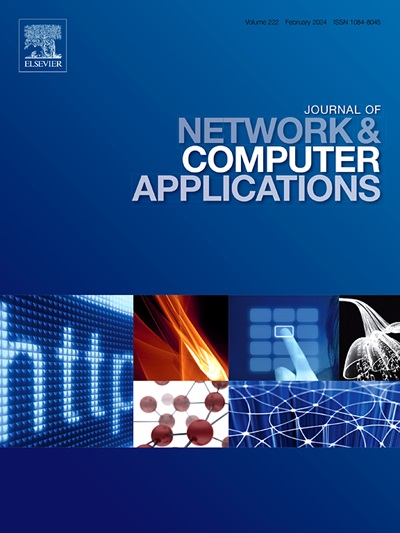An overview and solution for democratizing AI workflows at the network edge
IF 8
2区 计算机科学
Q1 COMPUTER SCIENCE, HARDWARE & ARCHITECTURE
引用次数: 0
Abstract
With the process of democratization of the network edge, hardware and software for networks are becoming available to the public, overcoming the confines of traditional cloud providers and network operators. This trend, coupled with the increasing importance of AI in 6G and beyond cellular networks, presents opportunities for innovative AI applications and systems at the network edge. While AI models and services are well-managed in cloud systems, achieving similar maturity for serving network needs remains an open challenge. Existing open solutions are emerging and are yet to consider democratization requirements. In this work, we identify key requirements for democratization and propose NAOMI, a solution for democratizing AI/ML workflows at the network edge designed based on those requirements. Guided by the functionality and overlap analysis of the O-RAN AI/ML workflow architecture and MLOps systems, coupled with the survey of open-source AI/ML tools, we develop a modular, scalable, and distributed hardware architecture-independent solution. NAOMI leverages state-of-the-art open-source tools and can be deployed on distributed clusters of heterogeneous devices. The results show that NAOMI performs up to 40% better in deployment time and up to 73% faster in AI/ML workflow execution for larger datasets compared to AI/ML Framework, a representative open network access solution, while performing inference and utilizing resources on par with its counterpart.
在网络边缘实现人工智能工作流民主化的概述和解决方案
随着网络边缘民主化的进程,用于网络的硬件和软件正在向公众开放,克服了传统云提供商和网络运营商的限制。这一趋势,加上人工智能在6G及以上蜂窝网络中的重要性日益增加,为网络边缘的创新人工智能应用和系统提供了机会。虽然人工智能模型和服务在云系统中得到了很好的管理,但在满足网络需求方面实现类似的成熟度仍然是一个公开的挑战。现有的开放解决方案正在出现,但尚未考虑民主化要求。在这项工作中,我们确定了民主化的关键需求,并提出了NAOMI,这是一种基于这些需求设计的网络边缘AI/ML工作流民主化的解决方案。在O-RAN AI/ML工作流架构和MLOps系统的功能和重叠分析的指导下,再加上对开源AI/ML工具的调查,我们开发了一个模块化,可扩展和分布式的硬件架构独立的解决方案。NAOMI利用最先进的开源工具,可以部署在异构设备的分布式集群上。结果表明,与AI/ML框架(一种代表性的开放式网络访问解决方案)相比,NAOMI在部署时间上的性能提高了40%,在大型数据集的AI/ML工作流执行上的性能提高了73%,同时执行推理和利用资源的速度也与AI/ML框架相当。
本文章由计算机程序翻译,如有差异,请以英文原文为准。
求助全文
约1分钟内获得全文
求助全文
来源期刊

Journal of Network and Computer Applications
工程技术-计算机:跨学科应用
CiteScore
21.50
自引率
3.40%
发文量
142
审稿时长
37 days
期刊介绍:
The Journal of Network and Computer Applications welcomes research contributions, surveys, and notes in all areas relating to computer networks and applications thereof. Sample topics include new design techniques, interesting or novel applications, components or standards; computer networks with tools such as WWW; emerging standards for internet protocols; Wireless networks; Mobile Computing; emerging computing models such as cloud computing, grid computing; applications of networked systems for remote collaboration and telemedicine, etc. The journal is abstracted and indexed in Scopus, Engineering Index, Web of Science, Science Citation Index Expanded and INSPEC.
 求助内容:
求助内容: 应助结果提醒方式:
应助结果提醒方式:


